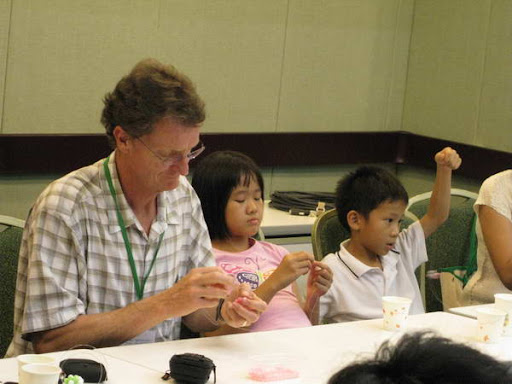Although it is not possible to tile a plane with regular heptagons, one can do it on a hyperbolic space as shown by follow figure using the Poincare disk.

I made a bead model for this tiling this summer. It is quite staightforward to make this model. One just weave heptagon by heptagon repeately along the spiral direction. After four or five layers, the whole structure just becomes so crowdy. It then becomes so tedious to have one more layer of beads.

More beautiful pictures on Hyperbolic tiling can be found here. It would be interesting to find out how many of these hyperbolic tilings are beadible by the spherical beads.
Some hyperbolic tiling from http://www.plunk.org/~hatch/HyperbolicTesselations/
























